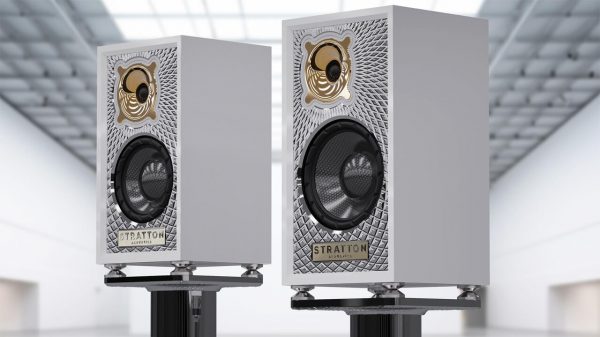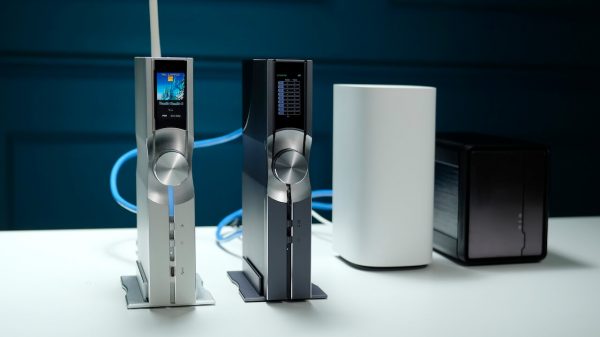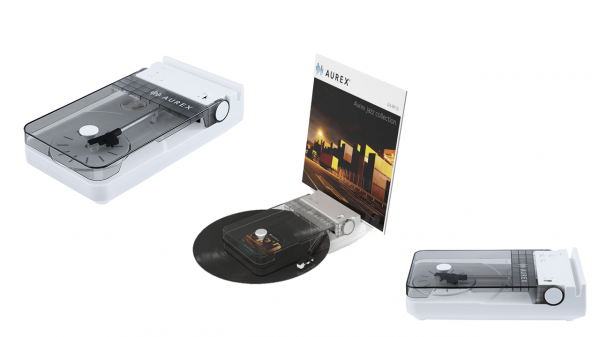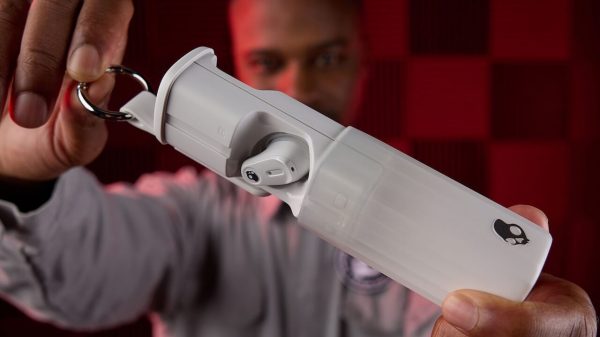The little engine that could is tucked away in a suburb outside of Boston, and after almost 10 years old it is hard not to be impressed by what Ben Carter and the folks at U-Turn Audio have accomplished. The new U-Turn Audio Orbit Theory Turntable is a huge milestone for the company that has focused on the market below $400 for most of their existence.
When I visited the company almost 7 years ago, it was impossible not to notice that they were struggling with the sheer volume of orders and that they needed to find better domestic sources for their platters, plinths, and motors. Carter and I discussed the rationale for the price structure of their tables and the possibility of manufacturing something in the $700 USD range.
There was already the desire to make something like the Orbit Theory and take on Rega and Pro-Ject, but that required more capital, employees, and the ability to create a tonearm that would be a major upgrade over the tonearm on the existing Orbit.

The new U-Turn Audio Orbit Theory is $999.95 USD — you can also order a version with their internal phono stage for $1,069.95.
U-Turn also decided to sell the Orbit Theory with an Ortofon 2M Blue MM Cartridge pre-installed; the 2M Blue retails for over $239 making the Orbit Theory an excellent value below $1,000.
Having sold well over 100,000 turntables around the time that the pandemic arrived, the company focused on getting orders shipped faster, securing a more stable supply of cartridges because the demand for cartridges was exceeding supply, and planning for the future.
What’s also interesting about the U-Turn Audio Orbit Theory is that price puts it into direct competition with the Pro-Ject Debut PRO and Rega Planar 3.
Design Philosophy
The U-Turn Audio Orbit Theory started as an experimental test bed for new ideas and designs. It was an opportunity for the team to push turntable performance to the next level without constraints, without any particular price point in mind, but also with the understanding that their customer base was not going to suddenly spring for a $3,000 turntable.
The focus with the new Orbit Theory is clearly on the tonearm, motor, and construction of the plinth.

OA3 Pro with Magnesium Armtube
It was important to Carter that they designed and assembled the new tonearms in-house.
For the Theory Orbit turntable, U-Turn decided that they needed to take their OA2 gimbal bearing design to the next level by further reducing points of resonance in the tonearm. Practically speaking, this meant using more rigid materials and minimizing the number of connection points between parts.
To do that, they designed an arm tube that combines the headshell, tube, and pivot housing into a single, continuous piece. This design leaves no connection points for resonances to creep in between the headshell and tonearm pivot. But what material would this be made of?
When we saw the first images of the tonearm, we wondered if another American turntable manufacturer had developed a 3D printed version for U-Turn but the cost of production seemed out of whack for a $1,000 turntable. I have personal experience with how that arm was developed and manufactured and it didn’t seem like a possibility when I started doing the math in my head
Ben Carter needed something light enough to preserve the low effective mass of the arm tube yet strong enough to not resonate during playback.
The answer was magnesium. Not only does magnesium have an incredible strength-to-weight ratio, but it can also be molded into complex shapes using a process called “thixoforming.”
This process made it possible to combine the different tonearm elements into a single piece, preserving the arm’s effective mass and low center of gravity.
The tapered arm tube design keeps vibration away from the stylus and ensures the walls of the arm tube are as thin as possible, keeping mass low. U-Turn increased the effective length to 7mm for lower angular tracking error and less distortion.
The OA3 Pro didn’t happen overnight. The company worked closely with their Wisconsin-based magnesium molder for over a year to develop and build the complex tool required to manufacture the arm tube. The result is an exceptionally strong, low resonance arm tube manufactured in the USA.

All new drive system
Every aspect of Orbit’s drive system has been revamped including the motor; my biggest complaint in 2015, and in 2019 when I purchased an Orbit+ for my daughter was the motor noise and the loose fit of the pulley.
The new motor and pulley are so quiet that they can be mounted directly to the plinth, ensuring perfect belt alignment. The motor is electronically controlled by a DC-powered sine wave generator – this provides very stable platter speed and gives you the ability to change between 33/45 RPM with the turn of a knob.
Theory’s acrylic platter is frosted, and all of platter surfaces have been precision machined for maximal flatness and minimal runout. They have also machined a groove into the platter to keep the belt in place.
The Orbit Theory’s belt is a new seamless design that’s molded from silicone. It’s more durable and won’t stretch over time — one of my biggest frustrations with the Orbit+ that I purchased for my daughter was how easily the belt fell off the platter or twisted during operation. The new design is a huge improvement in that regard.

Ebonized Oak
What better way to celebrate a new turntable than with a new finish? For Theory, U-Turn decided to do real hardwood plinths, but wanted to spice things up a bit. Ebonization is a traditional finishing process that turns wood black without staining or painting.
The color change is brought on by a chemical reaction between iron oxide and the natural tannins in the wood. Ebonization physically turns the fibers of the wood black – unlike a paint or stain that sits on top of the wood. U-Turn worked closely with their local woodshop to ensure that the finished plinths offered a much higher level of finish than even their Orbit+ hardwood models.
Availability
The U-Turn Audio Orbit Theory is available now for $999 at uturnaudio.com.
Related reading:

































ORT
September 16, 2022 at 11:42 am
Hello the house!
With this particular ‘table, U-Turn at last ’rounds the corner in to the arena, the coliseum of cool. In truth I would buy this over the Pro-Ject Debut Pro simply because the U-Turn possesses an Acrylic platter!
It looks better. I have no doubt that it reproduces music just as well. Now for the large derriere in the ointment: Neither of these tables have a least an auto stop feature. That is stoopid. Just plain frAudiophilian stoopid. Am I in the market for such an expensive (to me) turntable? Mayhap I am because I am a sucker for records. I have 7 turntables but one of them is going north come October to be presented to my brother and that leaves me with 6. 6 is the number of man so I must get back to 7.
What say you Sir Ian of White? Would this be a purchase over the other wise stunning, non-Acrylic Platter, Pro-Ject Debut Pro? I note your mention of Rega and its Planar3 and I must admit I have never given that marque much thought. Should I?
That “Ebonized Oak” is quite beautiful and I suspect in person ’tis more so. Thankyew…Thankyewveruhmuch!
Oh yes. I had wanted to go to CanJam this weekend but my ability to get around is worsening. If any of you will be there, I hope you enjoy it. I want to go but I walk like Karloff’s Mummy. More PT today so maybe?
ORT The Chaste
Ian White
September 16, 2022 at 3:28 pm
ORT,
Until I can compare them together, I would say hold off. The Debut PRO was really good with the Rainier. Even better with a Wellfleet.
I’m somewhat partial to the Orbit because I met the boys when they first started and have purchased two tables from them over the years.
I would take the Debut PRO over the Planar 3. Bring it on U-Turn.
Ian
ORT
September 17, 2022 at 12:28 am
Thank you!
ORT